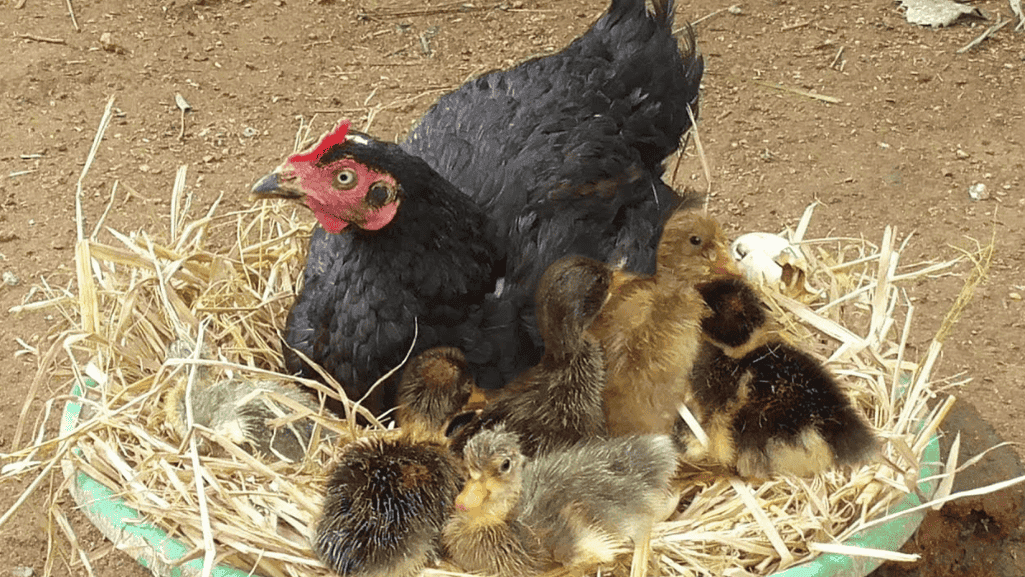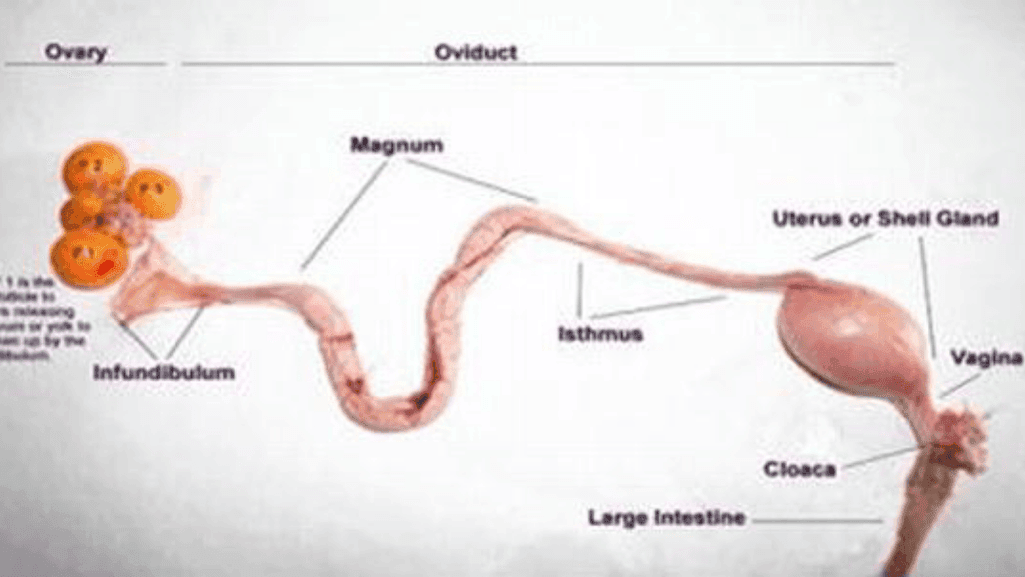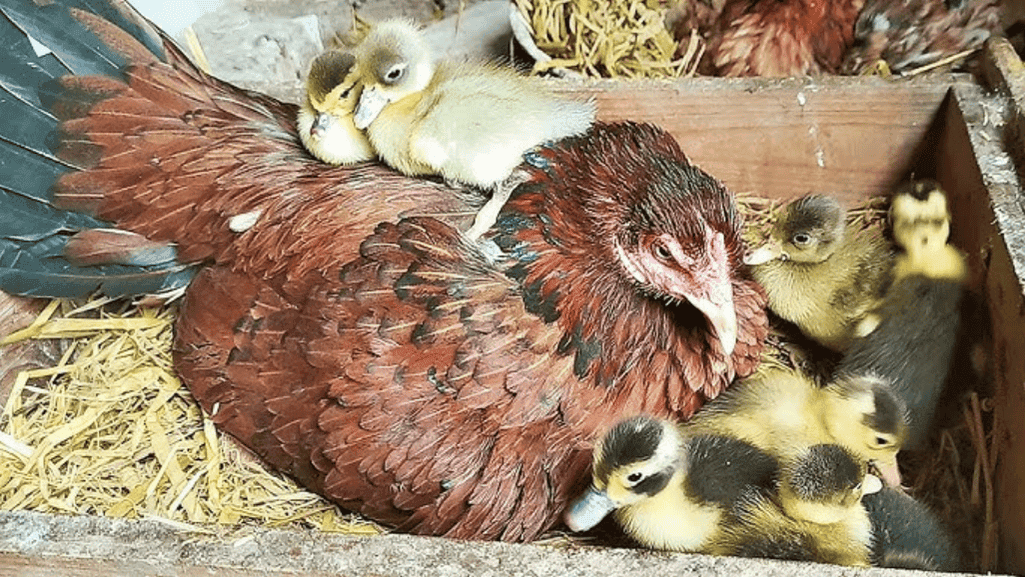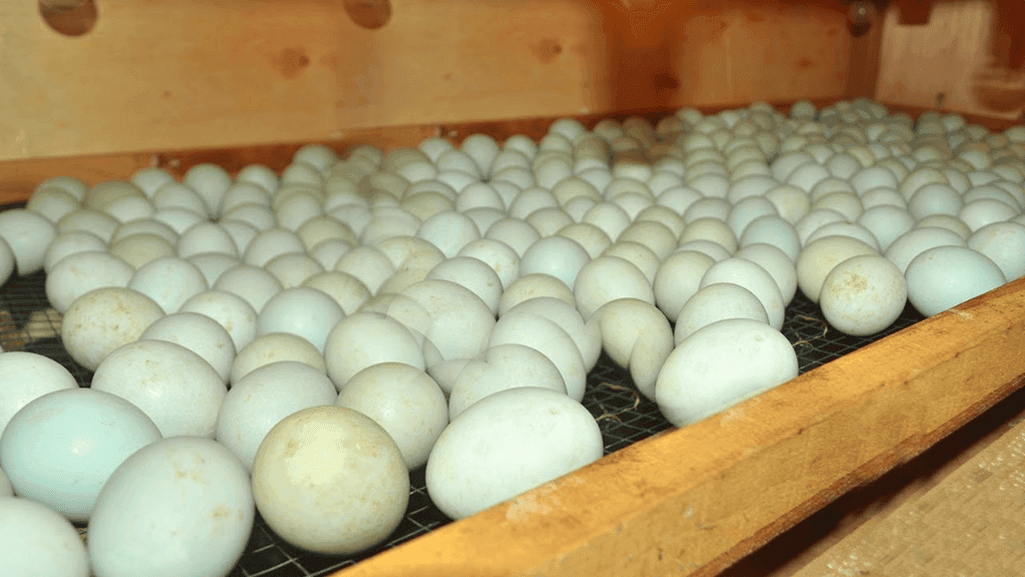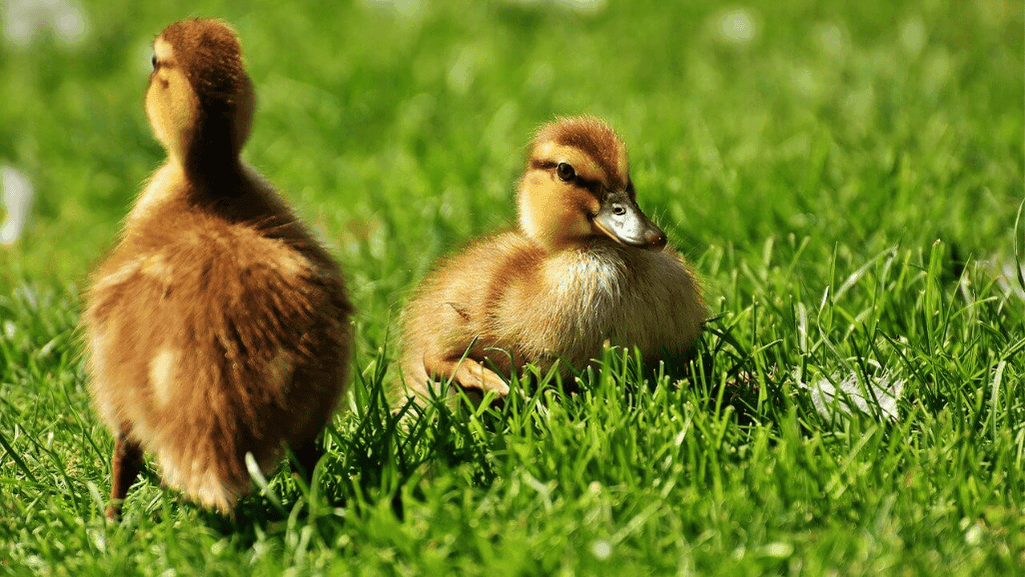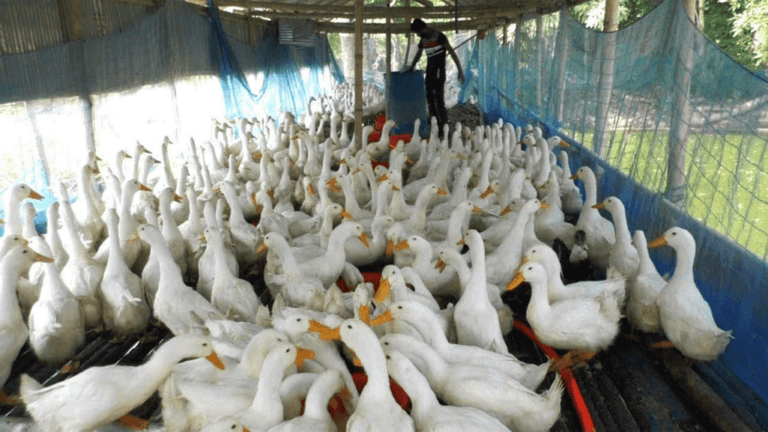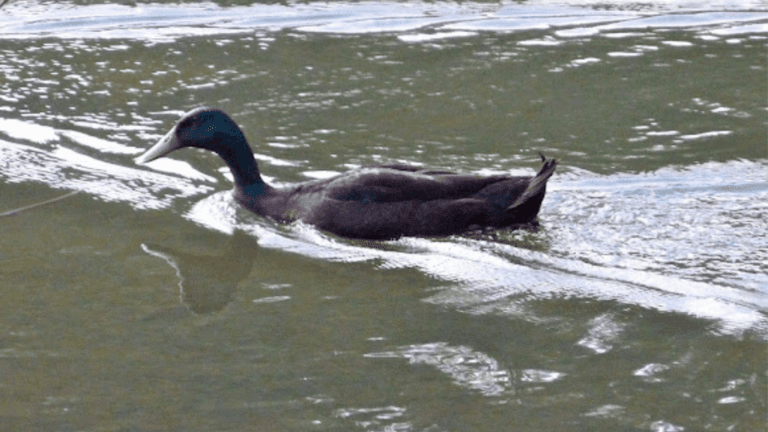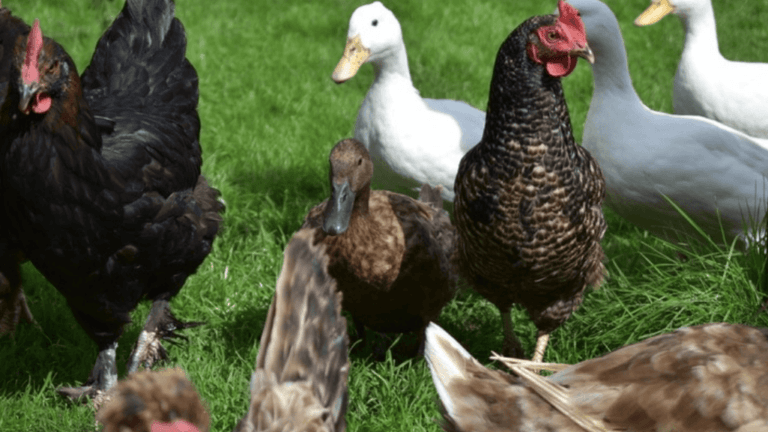The idea of interspecies egg incubation is truly amazing. It makes us wonder, can a chicken hatch duck eggs? This question leads us into the world of bird reproduction. Here, we see how birds like chickens, ducks, and turkeys try to cross-breed.
As we explore this, we learn about the amazing abilities of birds. They show us how adaptable and instinctive they can be.
Poultry owners often use chickens to incubate their eggs. But can they also care for duck eggs? This question opens up a whole new world of understanding.
As we dive deeper, we find out more about interspecies egg incubation. This knowledge could change how we raise different types of birds together.
Key Takeaways
- The enigma surrounding whether chickens can be surrogate mothers to duck eggs.
- An exploration of avian species’ natural incubating behaviors and interspecies capabilities.
- Intricate differences between hatching procedures for various poultry eggs.
- The significance of ideal conditions for incubation, including temperature and humidity.
- Practical guidelines for incubating and hatching duck eggs, accessible through a comprehensive guide here.
The Intriguing Possibility of Cross-Species Egg Incubation
In the world of poultry breeding, cross-species incubation is a fascinating topic. It raises important bird breeding questions and offers ways to improve genetic diversity. This method, where a chicken incubates eggs from other species like ducks, is especially interesting. It has big implications for raising mixed flocks.
This approach dives into reproductive biology and sustainability. It challenges old ways of poultry breeding and shows how birds can adapt to different roles. To understand it fully, we need to look at its benefits and challenges. We must also know the key stats and conditions for success.
Let’s dive into the details of using cross-species techniques, especially with ducks:
| Aspect | Detail |
|---|---|
| Incubation Period | 28 days for mallard-derived breeds, 35 days for Muscovy breeds |
| Viability Loss | 3% loss within 1 week, 10% by two weeks |
| Incubation Temperature | 99.5°F |
| Humidity Requirements | 55-58% for days 1-25; Over 65% for days 26-28 |
| Hatching Time Post-Pipping | 48 hours |
| Survival Without Food/Water | Up to 48 hours post-hatch |
| Optimal Egg Storage Conditions | 55°F and 75% humidity, not exceeding seven days |
Looking at these details helps us see why cross-species incubation could change poultry breeding a lot. When chickens can incubate duck eggs, it opens up new possibilities. It could improve the genetic diversity and strength of birds in raising mixed flocks. But, it needs careful control of the environment to mimic nature.
Starting such a project requires a lot of attention to detail and a deep love for innovation in bird care and sustainability. It could lead to new ways of poultry breeding and answer many important bird breeding questions.
Exploring the Biology Behind Chicken and Duck Egg Incubation
The world of avian reproductive biology is full of interesting facts. It shows how different birds, like chickens and ducks, care for their eggs. Learning about this helps us understand how to better care for eggs from various birds.
Understanding Avian Brooding Behavior
Avian brooding behavior is how birds keep their eggs safe. They control the temperature and protect the eggs from predators. It’s not just about keeping the eggs warm. They also turn the eggs and keep the right humidity for hatching.
Comparing Chicken and Duck Egg Incubation Processes
When we talk about chicken and duck egg hatching, we see big differences. Chicken eggs hatch in about 21 days, needing specific conditions. Duck eggs, like those from Pekin ducks, take around 28 days. Some ducks, like Muscovy, take even longer, about 35 days. Keeping the temperature and incubation control right is key.
The Role of Humidity and Temperature for Viable Hatching
The right humidity for hatching duck eggs is very important. Duck eggs need 55 to 60% humidity most of the time. Just before hatching, it should go up to 65%. A study shows that the right temperature, between 99.3 and 99.6 degrees Fahrenheit, is also crucial. This, along with temperature and humidity control, helps the eggs hatch well and the chicks to be healthy.
Can a Chicken Hatch Duck Eggs: The Root of Cross-Species Hatching
Exploring if a hen incubating non-chicken eggs is possible, we must understand their unique needs. Chickens can incubate eggs from other species, like ducks. Yet, the challenges of duck egg incubation in a chicken coop are complex.
A broody hen might not care if she’s sitting on duck eggs. They don’t usually pick and choose. This means they might be able to hatch broody hen duck eggs. But, duck eggs need different conditions to hatch than chicken eggs.
| Egg Type | Incubation Period | Temperature Range (°F) | Humidity Range (%) | Incubator Type |
|---|---|---|---|---|
| Chicken | 21 days | 99 to 99.5 | 50-55 (Days 1-18), 65-75 (Days 19-21) | HovaBator |
| Duck (Mallard/Domestic) | 28 days | 99 to 99.5 | 55-65 (Days 1-24), 65-75 (From day 25) | Little Giant |
| Duck (Muscovy) | 35 days | 99 to 99.5 | 55-65 (Days 1-24), 65-75 (From day 25) | Farm Innovators |
| Turkey | 28 days | 98 to 102 | 55-60 (Days 1-24), 75-80 (From day 25) | Octagon |
The table shows duck eggs need more humidity than chicken eggs, especially at the end. Knowing these small but important differences is key to a successful duck egg incubation in a chicken coop.
Success in hatching eggs from different species depends on getting the humidity, temperature, and timing just right. If you want your broody hen to hatch duck eggs, you’ll need to adjust things and watch the incubation closely. This ensures the eggs hatch well.
Diving into Duck Egg Incubation Basics: Tips for Beginners
Starting with duck egg incubation can be both rewarding and challenging for beginners. It’s crucial to grasp the basics and the care needed for these eggs. Success in hatching depends on proper care and the right techniques.
The Importance of Incubation Conditions
For hatching duck eggs, maintaining the right conditions is key. Duck eggs need specific humidity and temperature, different from chicken eggs. The ideal temperature for chicken eggs is 99.5º Fahrenheit. But, duck eggs need humidity between 55%-60% early on, then 65%-70% during the lockdown.
Ducks naturally wet their feathers before nesting, which helps keep the eggs moist. This shows how natural behavior can aid in successful incubation.
From Shipping to Hatching: Starting Right with Duck Eggs
The journey to hatching starts when you get the eggs. Let them settle, pointed end down, for hours to align the yolk. Candling is also recommended to check for cracks and embryo growth, which affects hatch rates.
Don’t wash the eggs to keep their natural protective layer. Store them cool, between 55º to 65°F, with about 75% humidity if incubating later.
| Statistic | Duck Eggs | Chicken Eggs |
|---|---|---|
| Typical Hatch Duration | 28-35 days | 21 days |
| Moisture Absorbency | 22% higher | Standard |
| Temperature for Incubation | 99.5º F | 99.5º F |
| Humidity for Incubation | 55%-60%, 65%-70% during lockdown | 50%-55%, 65% during lockdown |
| Egg Freshness Lifespan | Longer due to thicker shell | Shorter |
In conclusion, whether using a chicken or traditional methods, knowing the right conditions and care is crucial. Patience and careful handling are key to successful hatching.
Chicken vs. Duck: Are Incubation Techniques Interchangeable?
Exploring avian egg wonders shows us the differences between incubating chicken and duck eggs. While some basics like temperature and turning are the same, there are big differences. These differences make incubating mixed poultry eggs both challenging and rewarding.
Both chicken and duck eggs need to be kept at about 99.5°F. But, duck eggs, especially from breeds like Muscovy, take longer to hatch, up to 35 days. They also need more humidity, up to 70-80% in the end, compared to chicken eggs.
Good poultry cross-hatching means managing these conditions well. It also means knowing how each species behaves. For example, ducks need special turner rails in incubators, unlike chicken eggs.
| Aspect | Chicken Eggs | Duck Eggs |
|---|---|---|
| Incubation Duration | 21 days | 28-35 days (breed dependent) |
| Humidity Requirement | 25-60%, increasing before hatching | 55-70%, significantly higher in the last days |
| Temperature | 99.5°F | 99.5°F |
| Egg Turning Frequency | 4-5 times daily | 4-5 times daily |
While incubating eggs, like keeping temperature and turning them, is similar for both. But, things like how long and how much humidity they need are different. So, knowing these differences is crucial for successful poultry cross-hatching and helping eggs hatch well.
Poultry Incubation Tips: Ensuring Egg Viability
Starting the bird egg incubation journey needs patience, precision, and understanding of egg needs. Whether you’re into duck egg hatching or hatching duck eggs under a chicken, keeping conditions right is crucial. We’ll look at the fine details of poultry incubation tips to boost your success rate.
The Art of Candling and Egg Turning
Candling lets you see the embryo’s growth inside the egg. It helps spot bad eggs, avoiding bacterial spread. Turning eggs often, at least three times a day, helps the embryo grow better.
For better duckling hatching, store eggs right before incubation. Keep them at 55 degrees Fahrenheit with 75% humidity. Wrong storage can harm the embryo’s survival chances. Also, knowing the right incubation settings, like 55-60% humidity and 99.5 degrees Fahrenheit, is key for hen hatching duck eggs.
Decoding the Duck Egg Incubation Timeline
Watching the incubation closely is essential. From start to finish, each stage needs specific conditions. Early on, high humidity prevents evaporation. Near hatching, increase humidity to 65% to help the duckling break free.
Knowing when to stop turning and increase humidity is crucial. The last three days are critical for the duckling’s preparation. Any environment changes can affect the duckling hatching process. Reliable guidance can greatly improve your success.
In summary, the path from egg to duckling is full of challenges. A careful, hands-on approach to monitoring and adjusting conditions is needed. By following these poultry incubation tips, like proper candling, temperature, humidity control, and egg handling, you’re more likely to see healthy ducklings hatch.
From Pipping to Hatching: Recognizing Key Milestones in Duck Egg Development
Understanding duck egg incubation means knowing the important steps from pipping to hatching. This is especially true when watching a chick hatching duckling eggs. Pipping is when the duckling first breaks out of the eggshell. It’s a key moment because the duckling starts breathing and absorbs the yolk sac for nutrients.
During duck egg incubation, timing and conditions are crucial. The incubation temperature should be between 60°F to 65°F (15.6°C to 18.3°C). Eggs also need to be turned carefully to ensure even growth and avoid malpositions.
Breeders know that any delay in spotting hatchability problems can harm a duckling from chicken egg. It’s important to store eggs for less than 7 days and keep humidity levels right. For more tips on breeding, check out Ducks New World’s guidelines.
| Issue | Cause | Preventive Measure |
|---|---|---|
| Malpositions | Improper egg orientation, inadequate humidity | Correct egg setting, adjust humidity levels |
| Embryo abnormalities | Nutritional deficiencies (e.g., riboflavin, biotin) | Ensure balanced diet for breeders |
| Delayed hatching | Low incubation temperatures | Maintain optimal temperature range |
| Underdeveloped chicks | Poor ventilation, high incubator humidity | Adjust room and incubator ventilation systems |
In summary, keeping an eye on breeding conditions is key. This includes diet, egg handling, and incubator settings. Whether it’s a chick hatching duckling eggs or a specialized incubator, each part is crucial for healthy ducklings.
Raising Mixed Flocks: The Dynamics of Chicken and Duck Coexistence
Mixing chickens and ducks in one flock needs careful thought. Each bird has its own way of acting and needs. Knowing these helps keep the flock peaceful.
Post-Hatching Care: Nutritional and Environmental Needs
After hatching, chickens and ducks need different things to grow well. Ducklings need more water and protein than chicks. If a chicken is raising duck eggs, it must give them the right food.
It’s also important to make the coop right for ducks. They like wetter places than chickens do.
Behavioral Challenges and Social Structure of Mixed Flocks
When chickens and ducks hatch together, they face challenges. Chickens might fight with newcomers, especially in small spaces. Watching them closely helps avoid fights and makes sure everyone gets food and water.
When introducing new birds, watching them closely is key. This helps avoid big fights. Knowing this helps keep the flock calm and happy.
| Aspect | Chickens | Ducks |
|---|---|---|
| Space Requirements | Requires less space, adaptable to smaller areas | Needs access to water bodies and larger roaming areas |
| Feeding Needs | Primarily grain-based feeds | Higher protein and access to aquatic plants |
| Social Behavior | Aggressive during pecking order establishment | More relaxed, but can become territorial |
| Environmental Preferences | Prefers dry conditions | Thrives in moist environments |
For more tips on keeping a mixed flock happy, check out professional advice. It covers housing, feeding, and health needs for mixed flocks.
Being well-prepared and knowing what each bird needs makes raising them together rewarding. It can also improve your success in hatching eggs.
Hen or Incubator: Comparing Methods for Hatching Duck Eggs
Choosing how to hatch duck eggs is a big decision. You might pick a broody hen or a modern incubator. Each option has its own pros and cons that affect how well you can incubate eggs.
Using a hen to hatch ducklings is natural and affordable. Hens keep eggs warm, humid, and turn them automatically. But, this method can be tricky. It depends on the hen’s willingness to stay with the eggs.
On the other hand, incubators offer precise control over temperature and humidity. This is key, as shown by poultry incubation tips. Incubators, like the IncuView All-in-One or the Brinsea Mini II Advance, help hatch eggs successfully. They’re especially good for sensitive breeds like Muscovy ducks.
| Incubator Model | Price | Capacity and Features |
|---|---|---|
| GQF Hova-Bator | $80 – $127 | Economical, widely used |
| IncuView All-in-One | Approx. $160 | Keeps temperature at 99.5 F |
| Manna Pro Harris Farm Nurture Right 360 | Approx. $180 | Can hold 12-18 duck eggs |
| Brinsea Mini II Advance | Approx. $280 | Hatch countdown, 3-year warranty |
In conclusion, hatching duck eggs can be done naturally with a hen or with the help of technology. Each method has its own advantages for successful incubation. The choice depends on your needs, resources, and goals. Both nature and technology have their place in the world of poultry.
Unlocking the Mysteries of Duckling Hatchery and Survival
Starting the journey of incubating duck eggs is both exciting and detailed. It shows the dedication needed in poultry farming. Using a broody hen to incubate these eggs is special. It mixes a chicken’s natural instincts with the needs of duck eggs, bringing both challenges and rewards.
When a broody chicken hatches duck eggs, it’s key to know that chickens can help. But, we must adjust the methods and conditions. This is especially true for duck breeds like the Muscovy, which need a longer incubation time.
Monitoring Development: Touch Points to Success
For successful hatching, setting up correctly and watching closely is crucial. Here are the specific needs for incubating duck eggs, especially with a broody hen:
- Temperature and Humidity: Duck eggs need a bit warmer temperature than chicken eggs and more humidity.
- Egg Turning: Turning the eggs is vital. It stops the yolk from sticking to the shell and ensures even heat.
- Candling: This involves shining a light through the egg to see the embryo. It helps find eggs that won’t hatch and checks on the growth.
Assessing the Readiness for Hatching: Signs to Watch For
As hatching day gets closer, we must be more careful. Here are signs that show ducklings are ready to hatch:
- External pipping: The first crack or small hole on the eggshell made by the duckling’s bill. It’s an excited yet critical time.
- Restlessness in the Hen: Your broody hen may start showing restlessness when the ducklings are about to hatch, often adjusting her position frequently to accommodate the hatching ducklings.
- Listening for Sounds: Soft peeps from within the eggs are audible sounds that the ducklings are actively ready to break free.
Understanding the differences between hatching duck eggs with a broody hen and regular chicken egg incubation shows the adaptability and challenges of mixed-species egg hatching.
Here is a table to show the differences in incubation periods and needs for different duck breeds. This is important for planning tips for hatching duck eggs with chicken.
| Duck Breed | Incubation Period | Egg Laying Pattern |
|---|---|---|
| Muscovy | 35 days | Up to 15 eggs per clutch, infrequent laying |
| Khaki Campbell | 28 days | One egg/day, early mornings |
| Indian Runner | 28 days | One egg/day, highly regular early morning laying cycle |
Exploring the complexities of incubating duck eggs shows that using a broody hen is not just about saving on technology. It also makes the hatchery experience more natural. Success depends on carefully adjusting the hen’s incubation environment and watching the eggs closely.
Conclusion
Exploring if a chicken can raise ducklings shows the amazing world of cross-species egg hatching. We learned that the right conditions are key. This includes keeping the temperature at 99.5-100 degrees and humidity at 55-65%.
Chicken eggs hatch in about 21 days, while duck eggs take up to 28 days. Muscovy eggs can take 35 days. Patience and careful attention are essential.
Turning eggs five times a day helps them hatch successfully. Duck eggs have a 85% fertility rate. Chicks and ducks grow strong at 7-9 weeks, and get hard feathers by 4 weeks.
Advanced tools help us understand hatching better. They can spot hatching signs with over 92% accuracy. This shows how adaptable and caring birds are.
Studying 2,111 duck eggs shows how adaptable birds are. They can care for each other’s young, just like their own. This makes us wonder about the limits of animal relationships.


